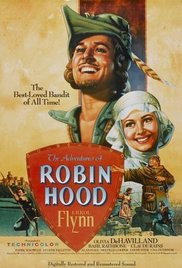 I remember as a young girl watching “The Adventures of Robin Hood” on television, the 1938 version with Errol Flynn. At the time, it was maybe 25 years since the film had originally been shown in theaters. The movie had everything – a swashbuckling hero, a beautiful heroine and a sinister villain. It was a drama, it had action and adventure, moments of light-hearted comedy, and it was a love story all set in merry old England (supposedly back in the year 1191). In this post I will begin by discussing the film and the actors involved in this classic movie and I will end with a brief history of the legend of Robin Hood and some of the historic places that still exist in England.
I remember as a young girl watching “The Adventures of Robin Hood” on television, the 1938 version with Errol Flynn. At the time, it was maybe 25 years since the film had originally been shown in theaters. The movie had everything – a swashbuckling hero, a beautiful heroine and a sinister villain. It was a drama, it had action and adventure, moments of light-hearted comedy, and it was a love story all set in merry old England (supposedly back in the year 1191). In this post I will begin by discussing the film and the actors involved in this classic movie and I will end with a brief history of the legend of Robin Hood and some of the historic places that still exist in England.
“The Adventures of Robin Hood”
“The Adventures of Robin Hood” premiered on May 14, 1938. The movie directed by Michael Curtiz was filmed between September 1937 and January 1938 with the interior scenes shot on several different Warner Bros. Studio soundstages in Burbank, CA. The exterior scenes shot were filmed at the Warner Ranch in Calabasas, the archery tournament was filmed at Arroyo Park in Pasadena, Bidwell Park in Chico was used for many of the Sherwood Forest scenes with additional scenes shot at Lake Sherwood. (Interesting Note: Lake Sherwood, now an upscale community located in Ventura County, was named for its association with two Robin Hood films. The first movie was the 1922 silent film starring Douglas Fairbanks which used the location for the Sherwood Forest scenes. Sixteen years later, the 1938 “Adventures of Robin Hood” also filmed there)
It was the first Warner Bros. Studio movie to be filmed in Technicolor, the estimated cost of the production was $2 million. The Technicolor film process was a relatively new production technique for the movie industry and it could be rather costly because it used special slow speed cameras which required the soundstage to be set with bright lighting for filming. Whether the scenes involve Robin Hood scaling the castle walls or riding on horseback through Sherwood Forest, the Technicolor color saturation adds an intense sense of reality that probably could not have been achieved if the movie had been filmed in black and white.
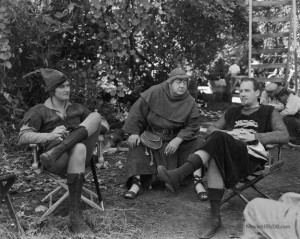
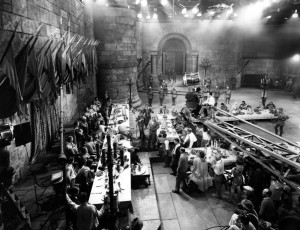
The cast of the movie was absolute perfection with Errol Flynn playing the dashing hero of Sir Robin of Locksley, also known as Robin Hood. Flynn had previously made his first film, the 1935 “Captain Blood”, for Warner Bros. and it had turned out to be a very profitable movie for the studio so they were willing to commit to the expensive Technicolor production of the “Adventures of Robin Hood” with Flynn as the lead character because they knew it would be a successful film. (Interesting Note: The role of Robin Hood had originally been intended for James Cagney but he had left Warner Bros. over a contract dispute and the film was postponed for three years at which time Flynn took over the role)
The elegant Olivia de Havilland played Lady Marian Fitzwalter, known as Maid Marian in the movie. This was just a year before she played perhaps her most famous film role as Melanie in “Gone with the Wind”. Flynn and de Havilland had co-starred in two other films; they would eventually make eight films together. It has been speculated that they were romantically involved but years later de Havilland denied the allegations.
Basil Rathbone played the sinister Sir Guy of Gisborne and Claude Rains played the villainous Prince John, the brother of Richard the Lionheart. Alan Hale, Sr. played “Little John”; he had previously played the same role in the 1922 silent film version of “Robin Hood” co-starring with Douglas Fairbanks. (Interesting Note: Hale, Sr. is probably best known to my generation as the father of Alan Hale, Jr. who played the Skipper on Gilligan’s Island)
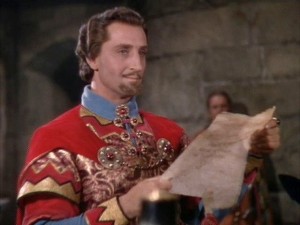
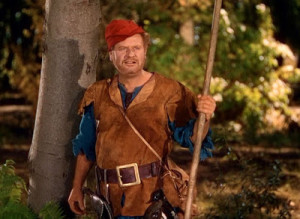
After casting the actors in the major roles, the next step in the film production was designing and creating the elaborate medieval period costumes. Special attention was paid to the selection of color for the fabrics since this was a Technicolor film. The contrast of Robin Hood’s earthy green costume with Sir Grisbourne and the other noblemen’s rich colored costumes served to visually illustrate the difference between the rich and the poor. In one key scene, Robin is giving a speech to his Merry Men and as he moves slightly the deep red lining of his cape is revealed adding a sense of drama that he is really Sir Locksley of noble birth. For the majority of the film we see Robin in the same costume while Olivia De Havilland, as Maid Marian, had nine costumes and Basil Rathbone, as Sir Grisbourne, had seven.
The Archery Tournament scenes were filmed at Arroyo Park in Pasadena and the action was coordinated by Howard Hill, a professional archer. The stuntman that would be receiving a direct hit from an arrow during the scene wore a metal chest plate covered with a piece of balsa wood. Hill also worked with the sound department to create the distinctive arrow sound using a specially made bow and a thicker arrow. In perhaps one of the most famous scenes in the movie, when Robin Hood splits the arrow of an opponent to win the tournament, it has been speculated that a pre-cut arrow was fired from the bow then traveled the distance along a wire to accurately hit the target. (Interesting Note: At the time it was filmed back in the late 1930s, the movie had employed for the archery tournament scenes the largest number of stuntman used in a single production)
The intricate sword fight scenes were extensively choreographed with exaggerated movements to increase the dramatic effect. Flynn and Rathbone had previously co-starred in “Captain Blood” and were familiar with the sword techniques used for filming; Rathbone was actually better skilled with the sword while Flynn disliked practicing. The type of swordplay in the movie was actually used modified fencing techniques with stylized lunges and parries (fencing bladework maneuvers intended to deflect or block an opponent’s attack) while in real life medieval swordplay had used boarder swords and more “hacking” motions. The final duel of the movie between Robin and Grisbourne is considered by many film historians to be the one of the most exciting swordfights ever filmed.
The Legend of Robin Hood
Robin Hood is a character in a popular English folk legend. The earliest known reference to him was in a 15th century ballad, “Robin Hood and the Monk” which has now been written down and preserved at the Cambridge University. A collection of stories about the famous outlaw, “A Gest of Robyn Hode”, was written circa 1500 followed by “Robin Hood and the Potter” written in 1503.
Historians say that Robin Hood was possibly an alias for a nobleman by the name of Sir Robert Fitzooth, later becoming the Earl of Huntingdon, who was born around 1160 in the Nottinghamshire village of Locksley; he died in 1247 at the approximate age of 87 years old. Sir Robert was an ardent supporter of King Richard the Lionheart. While the King was away at the Third Crusade, the Sheriff of Nottingham and his henchman Sir Guy Grisbourne took advantage of the situation by enforcing the collection of exorbitant taxes. Seeing these increasingly unfair conditions brought onto the lower class, Robin was determined to help by stealing the money back from the Sheriff and returning it to the poor. Originally acting alone Robin used his skills as an excellent archer and swordsman. Eventually he gained the support of a group of men, which included Little John, Will Scarlet and Friar Tuck. Subsequent stories romantically linked Robin Hood to Lady Marian Fitzwalter, possibly the daughter of an English nobleman. The earliest reference to Maid Marian was in a story first printed in 1490, “A Lytell Geste of Robin Hood”.
In 1883 “The Merry Adventures of Robin Hood of Great Renown in Nottinghamshire”, written and illustrated by Howard Pyle, adapted the stories of the legend into a collection of children stories. In this popular book, each chapter tells a different story about the famous legend, such as when Robin Hood first meets Little John in Sherwood Forest and they battle with staffs. In another story, Robin meets the pious but inebriated Friar Tuck who ends up carrying Robin on his back while crossing a river. The book ends when King Richard returns to England, frees the imprisoned Robin and his men and officially pardons them.
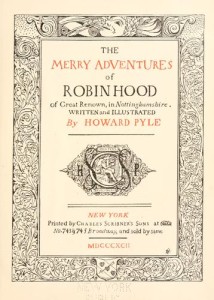
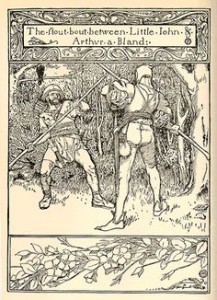
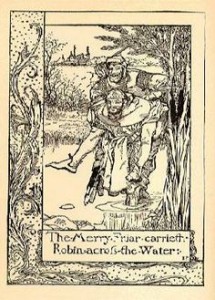
The stories of Robin Hood proved to remain popular with the public and eventually they were made into movies. Some of these films include the 1922 silent movie, “Robin Hood” starring the dashing Douglas Fairbanks, followed by the 1938 “The Adventures of Robin Hood” movie starring Errol Flynn in the title role, then the 1976 “Robin and Marian” film starring Sean Connery and Audrey Hepburn which is based on a French version of the legend depicting the couple in their later years, another film was the 1973 Disney animated film “Robin Hood”, then the 1991 “Robin Hood: Prince of Thieves” starring Kevin Costner which starts the story while Robin is overseas fighting in the Crusades and the 1993 comedy spoof “Robin Hood: Men in Tights” starring Cary Elwes and directed by Mel Brooks.
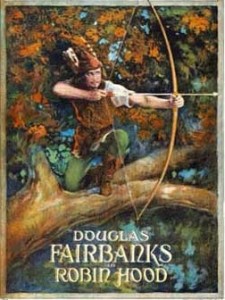
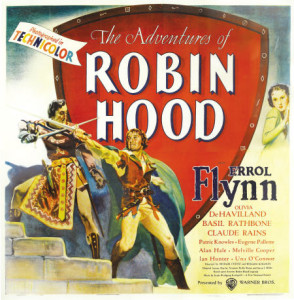
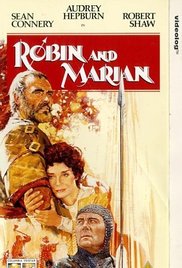
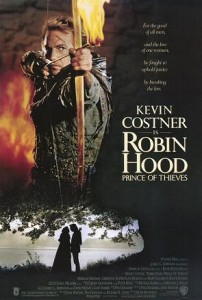
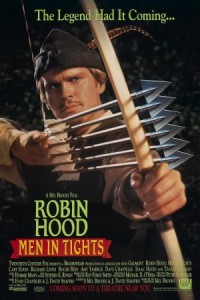
Listed below are some of the real life locations in England that have been mentioned in the stories about the legend of Robin Hood:
- Nottinghamshire – This area of England, located138 miles north of London, is a major British tourist destination probably due to its historical link with the legend of Robin Hood. Places to visit are the City of Nottingham and Sherwood Forest. Nottingham is a charming city and tourists can explore the remains of Nottingham Castle and also visit several abbeys and churches located nearby as well as the Village of Edwinstowe which is the site of Thoresby Hall. Once part of the Kingdom of Mercia in Anglo-Saxon times, the region was once known in the ancient British Celtic language as “Tigguo Cobauc” or the Place of Caves. (Interesting Note: In 2010, the University of Nottingham began an extensive project to map out the 450 sandstone caves in the area. Were these caves possibly used by Robin Hood and his band of outlaws to hide from the Sheriff of Nottingham?)
- Nottingham Castle – Nottingham Castle was built in the Middle Ages on a natural promontory, known as “Castle Rock”, with 130 feet high cliffs. The royal fortress was possibly used as a royal residence by King Richard the Lionheart; in 1649 the massive structure was partially demolished. Today, tourist can visit Nottingham Castle which has a small museum and also tour the surrounding grounds.
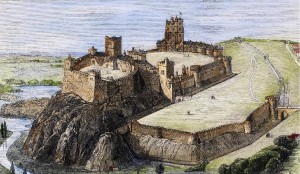
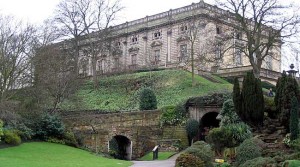
- Sherwood Forest – Perhaps one of the most iconic locations associated with the legend of Robin Hood is Sherwood Forest in Nottinghamshire, England. This famous royal hunting woodland forest of ancient oaks and birch trees covering 1,045 acres is where the outlaw Robin Hood and his group of “merry men” possibly lived. Today, the Sherwood Forest Visitor Center is a great place to start a tour and other points of interest in Sherwood Forest include the famous Major Oak.
- The Major Oak – The Major Oak is located in Sherwood Forest and according to the local folklore was Robin Hood’s hideout. (This theory is not substantiated since the tree dates between 800 and 1,000 years old and the idea is possibly connected with the Victorian era when legend and stories were changed to create a more romanticized version) Regardless, the Major Oak is still noteworthy due to its massive size and it is circumference is approximately 33 feet and weighs an estimated 23 tons.
- Loxley – Loxley is a small village located 3 miles northwest of Sheffield in Yorkshire. According to the legend, Loxley is the birthplace of Robert Locksley, who would later become the outlaw Robin Hood. Yorkshire also had a very large forest, Loxley Chase, which in the 12th century extended so far as to border Sherwood Forest in Nottinghamshire. This geographic location makes it highly probable that Robin Hood and his “merry men” roamed the area when “stealing from the rich to give to the poor”!

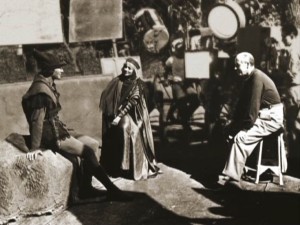
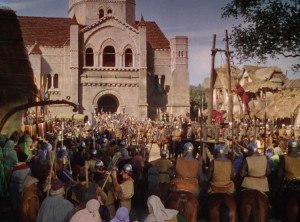
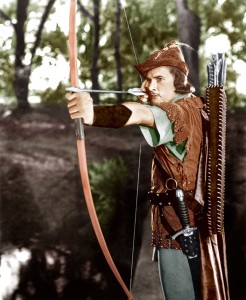
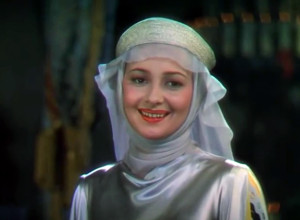
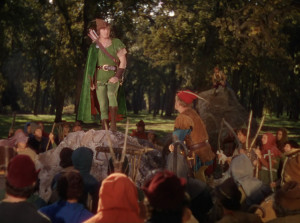
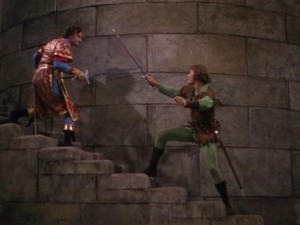
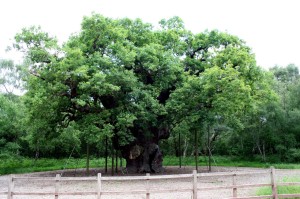
Barbara, this was brilliant! I have always been particularly fascinated with the legends surrounding Robin Hood, and this blog entry hit the spot. Thank you!